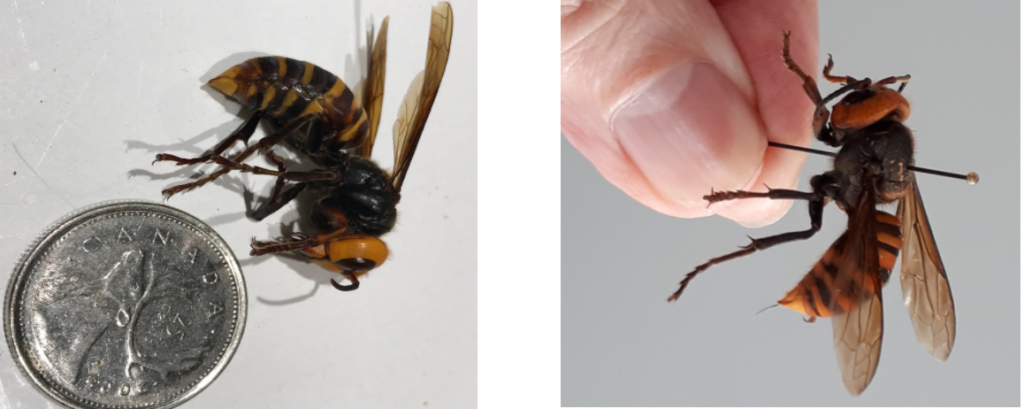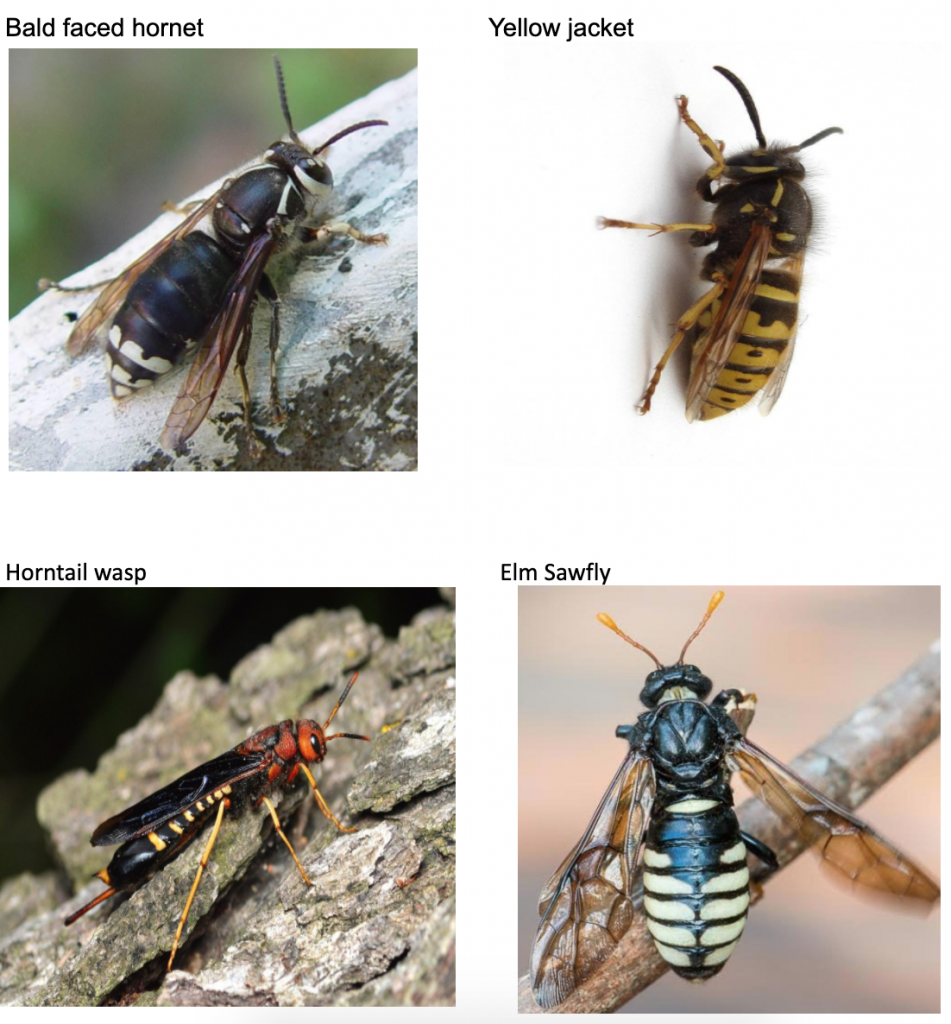Asian Giant Hornets
From our Provincial Apiculturist, Paul VanWestendorp. May 27,2020
Dear Beekeeper,
Recently, a specimen of the Asian Giant Hornet (AGH) Vespa mandarinia was found and collected just south of Langley.
The specimen will be subject to an autopsy and DNA sequencing to determine its caste (~queen or worker) and its Asian origin.
Until now, the only confirmed cases on the mainland included a single specimen in White Rock and two specimens near Blaine WA.
The Langley find indicates that AGH may have established nests farther into the Fraser Valley than had been anticipated.
It is expected that more sightings will be reported in the coming months. As nests increase in size, AGH is expected to increase its predation on honeybees.
We urge you to be vigilant and report any unusual activities and sightings to either one of the following;
https://bcinvasives.ca/report
paul.vanwestendorp@gov.bc.ca
http://www2.gov.bc.ca/invasive-species
If at all possible, include a photograph for prompt identification. For our reference, I have attached the most recent Pest Alert release.
For protecting your colonies, you may want to install an entrance reducer by July 01.
For any questions or concerns, you may email me directly.
Paul van Westendorp
Provincial Apiculturist
British Columbia

Pest Alert:
The Asian Giant Hornet (Vespa mandarinia) was first found in Nanaimo on Vancouver Island in mid-August 2019. The single nest was located and destroyed. Since then, a single specimen was found in White Rock in mid-November 2019 and two specimens near Blaine, Washington in early December 2019. The Asian Giant Hornet is classified as a serious honey bee predator and their stings can be hazardous to people.
Canadian and US agencies are coordinating surveillance and eradication efforts to prevent the Asian Giant Hornet from establishing itself.
Please report it if you see it:
British Columbians who think they may have seen one are asked to take a photo if possible and report the sighting to any of the following:
- 1-888-933-3722 – Invasive Species Council BC
- https://bcinvasives.ca/report
- paul.vanwestendorp@gov.bc.ca
- http://www2.gov.bc.ca/invasive-species
This is what the Asian Hornet looks like:
The Asian Giant hornets are large and have noticeably large orange heads and black eyes. Worker hornets are approximately 3.5 cm in length and queens can be up to 4-5 cm in length with a wingspan of 4-7cm.

Look-alike species:
There are several large insects that are native to British Columbia that are commonly seen and could be mistaken for Asian Hornets. There is no need to report these ones:

Other information about Asian Hornets:
- Asian Hornets are not interested in humans, pets and large animals. They hunt insects for food. The only time hornets will attack is when their nest is disturbed.
- Asian hornets will feed on honeybees and are capable of destroying hives in a short time period.
- Hornets are dormant and unlikely to be seen in fall and winter.
If you are stung:
- As with wasp or bee stings, place an ice cube/pack or cold compress on the location to reduce inflammation and the spread of venom.
- Don’t rub the site, it will cause the venom to spread into the surrounding tissue.
- If you are stung multiple times or have symptoms of toxic or allergic reaction, seek medical attention immediately.
Biology:
- V. mandarinia is a large hornet that predates on honeybees and other large insects. It establishes ground nests and forages as far as eight kilometres from its nest. Similarly to endemic wasps including Bald-Faced Hornets and Yellowjackets, the Giant Hornet establishes annual nests in the spring. During the summer it expands until August when virgin queens will emerge. After mating, the young queens will disperse and winter on their own. The original nest dies in the fall.
- This hornet is widely distributed in East Asia from the sub-tropics of South China to the temperate zones of the Korean peninsula and northern Japan.
Links:
- Visit HealthLink for more information on common insect stings:
- https://www.healthlinkbc.ca/health-topics/sig44526 and allergies to insect stings:
- https://www.healthlinkbc.ca/health-topics/rt1285
- Invasive Species Council of BC – https://bcinvasives.ca/
